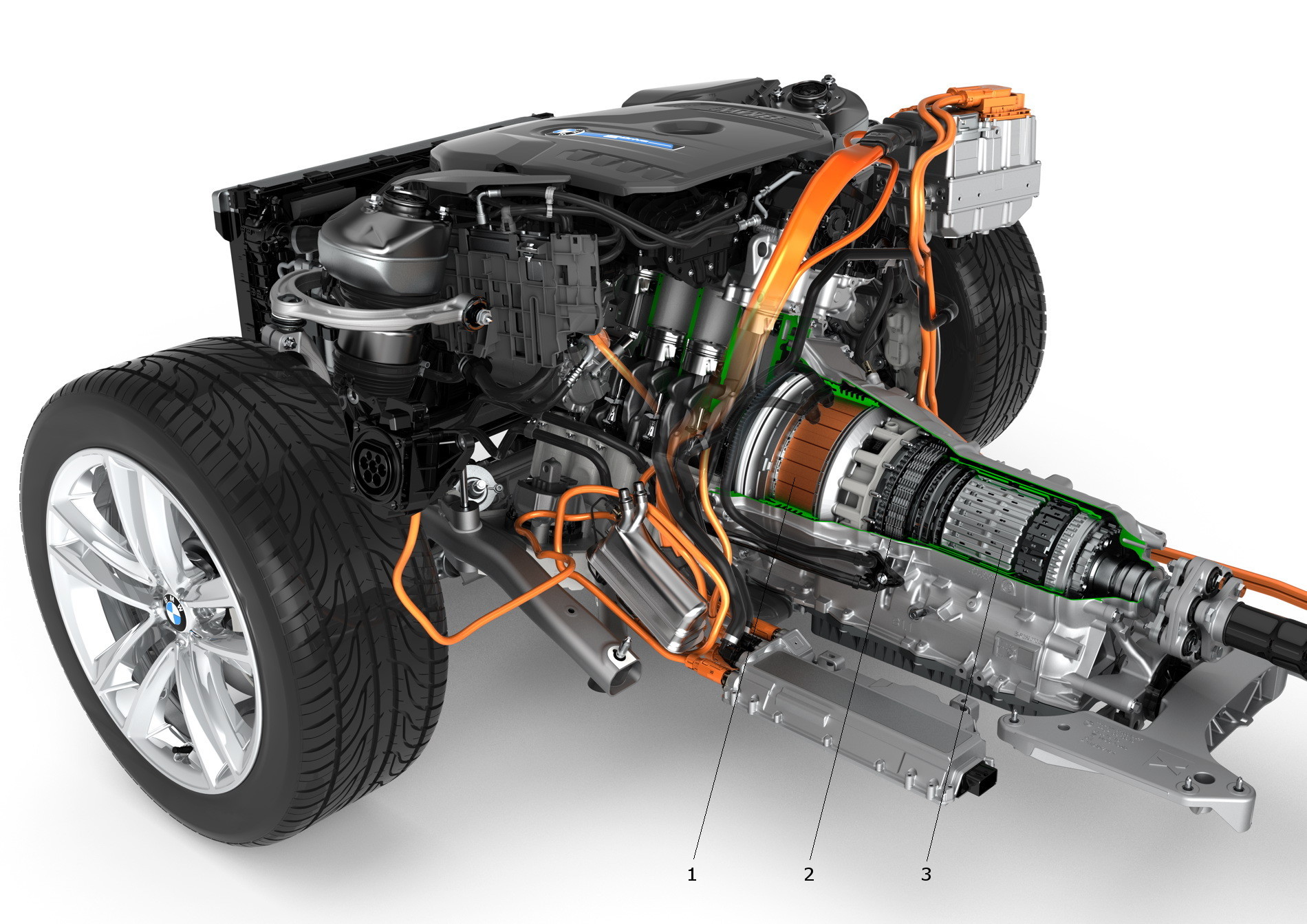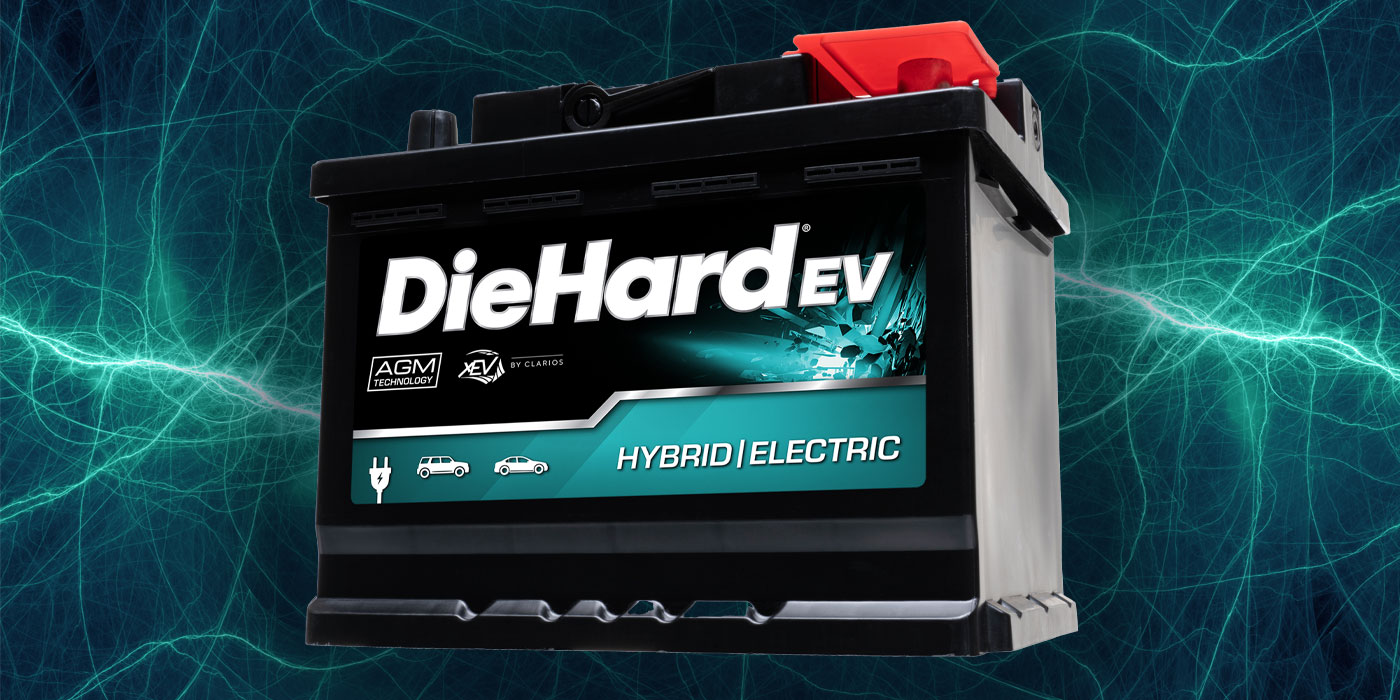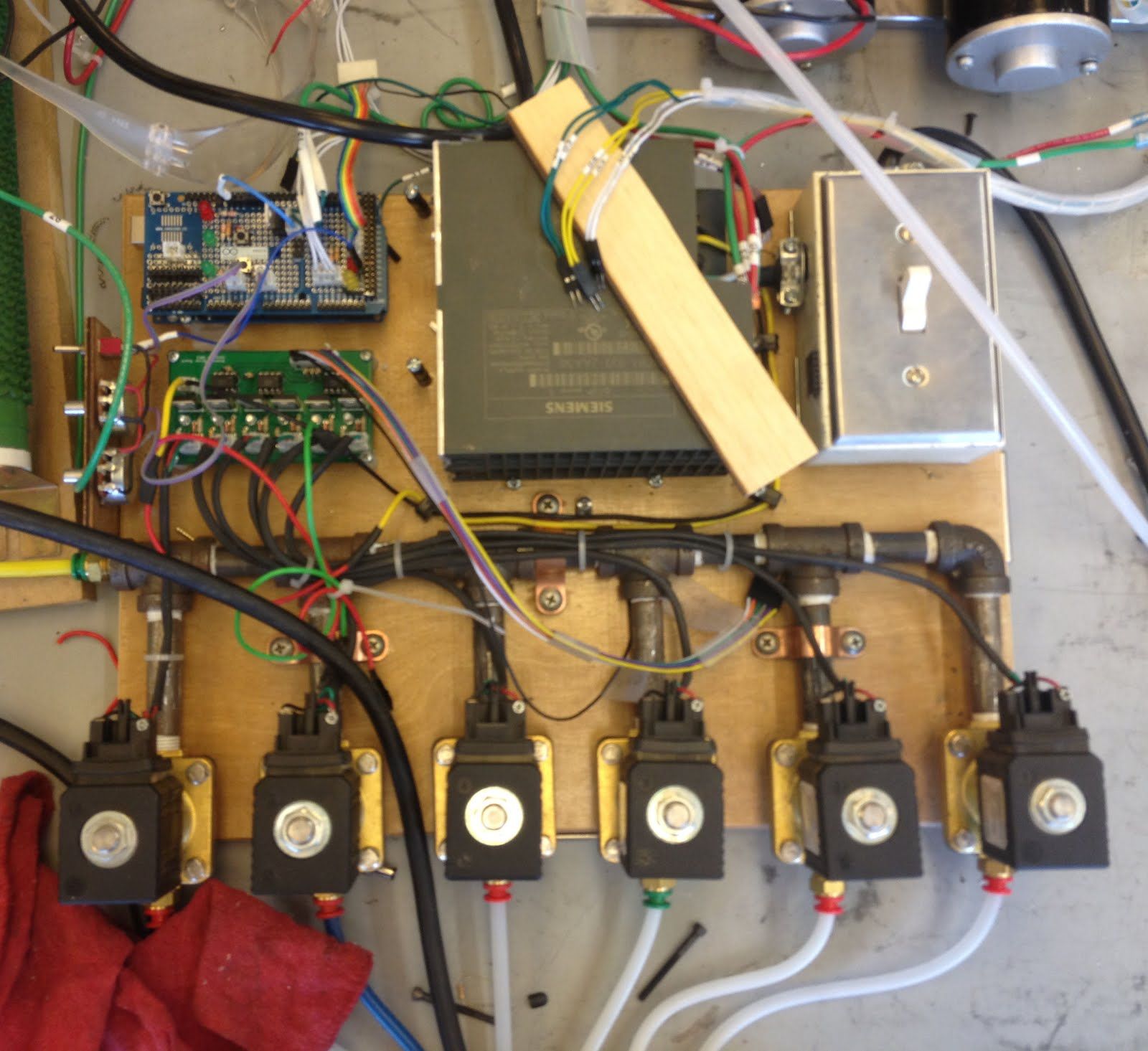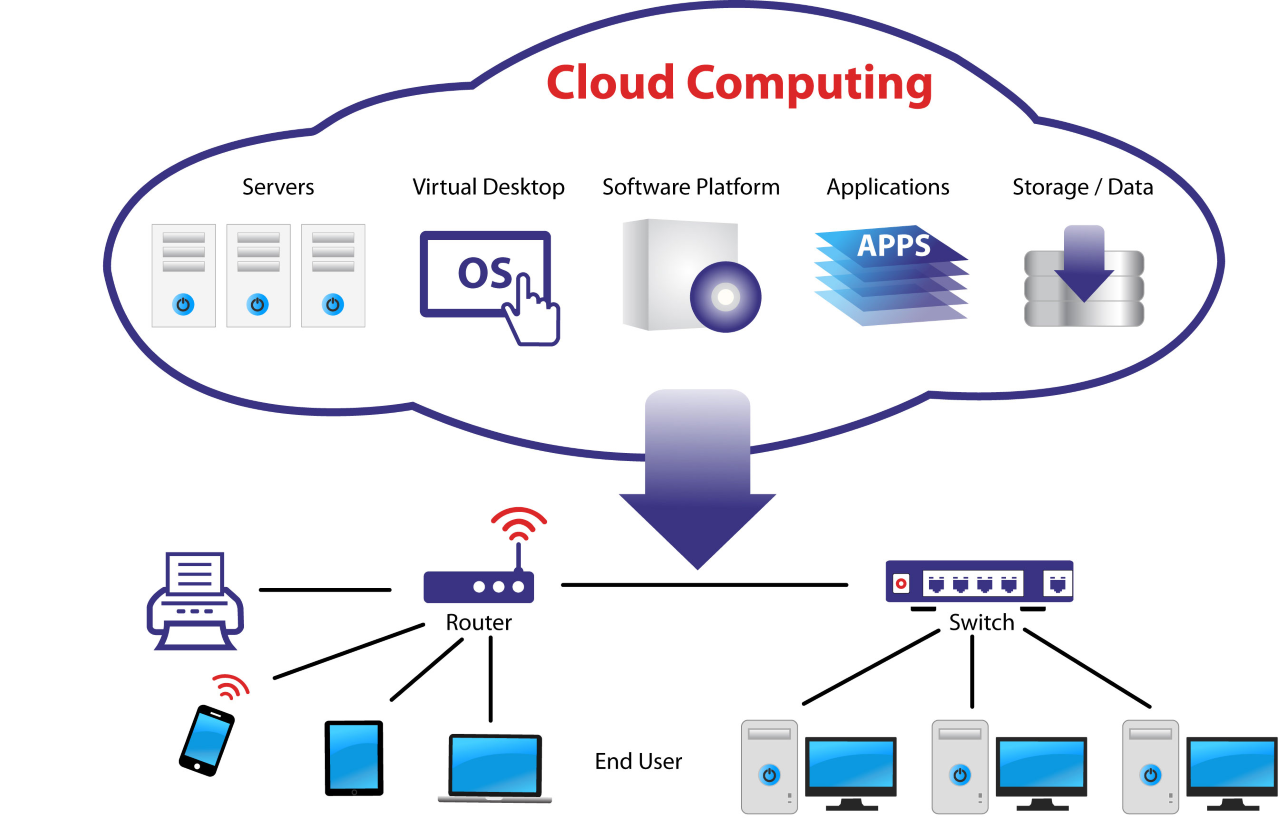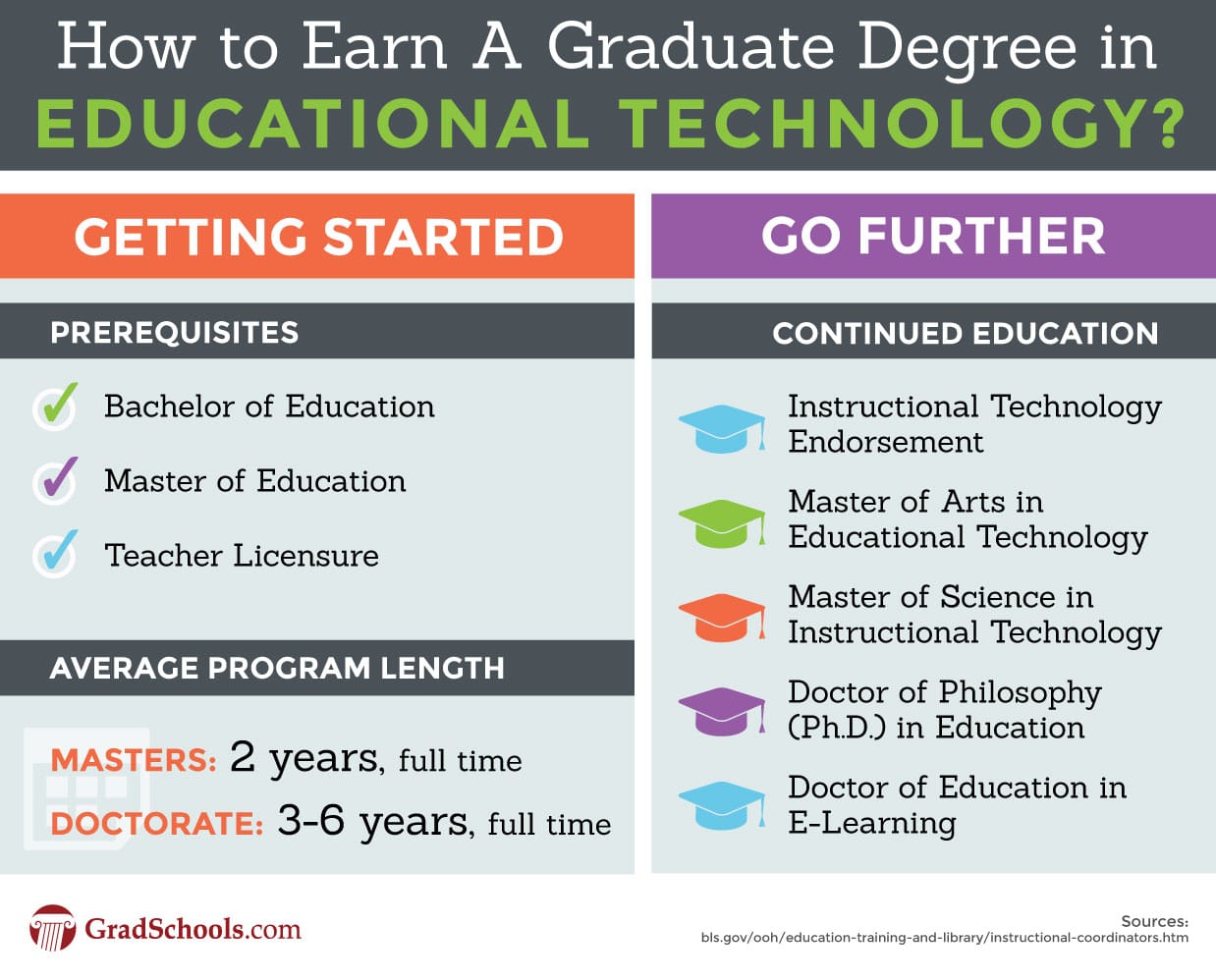When most people think about “beating the casino,” they imagine grand strategies, secret methods, or insider knowledge that can tip the scales in their favor. The allure of finding a foolproof way to win big at the casino has fascinated gamblers for centuries. However, the reality is that the house always has an edge, and over time, this edge ensures that the casino comes out on top. Despite this, there is a unique and unconventional approach that can allow you to enjoy your casino experience while minimizing your losses and potentially even offsetting the casino’s edge.
This approach involves leveraging small bets and taking full advantage of the amenities offered by the casino, such as free drinks and the comfort of climate-controlled environments. By making minimal bets on games with low house edges and maximizing the value of the free amenities provided by the casino, you can create a scenario where your overall costs are minimized, and the casino’s expenses to accommodate you may exceed what you spend. This is not about winning big or beating the odds in the traditional sense; it’s about enjoying the casino experience while making it economically sustainable for yourself.
To illustrate this approach, we will introduce the Maiolo Casino Efficiency Function, a formula designed to quantify the balance between expected gambling losses and the value of free amenities provided by the casino. This function will help demonstrate how you can achieve a technical edge, making your casino visits both enjoyable and cost-effective.
For this exploration, I will focus on Del Lago Casino in Waterloo, NY. Del Lago Casino, located in the heart of the Finger Lakes region, is a popular destination for both locals and tourists.

It offers a wide variety of gaming options, including table games, slot machines, and electronic gaming machines, along with numerous amenities such as restaurants, bars, and free drinks for players. This casino serves as an ideal case study for my approach due to its comprehensive amenities and the availability of games that allow for low minimum bets.
To provide a concrete example of how this strategy works, consider a simulated session at Del Lago Casino. In the upcoming sections, I will delve into the specifics of this approach, examining the games with the best odds and lowest minimum bets, calculating the costs associated with the amenities you use, and demonstrating through practical examples how this strategy can be applied effectively.
Preview of Results
To give you an early glimpse of how effective this strategy can be, let’s look at a graph that compares the cumulative winnings of a simulated craps session using the “Don’t Pass” bet with and without the inclusion of free amenities.
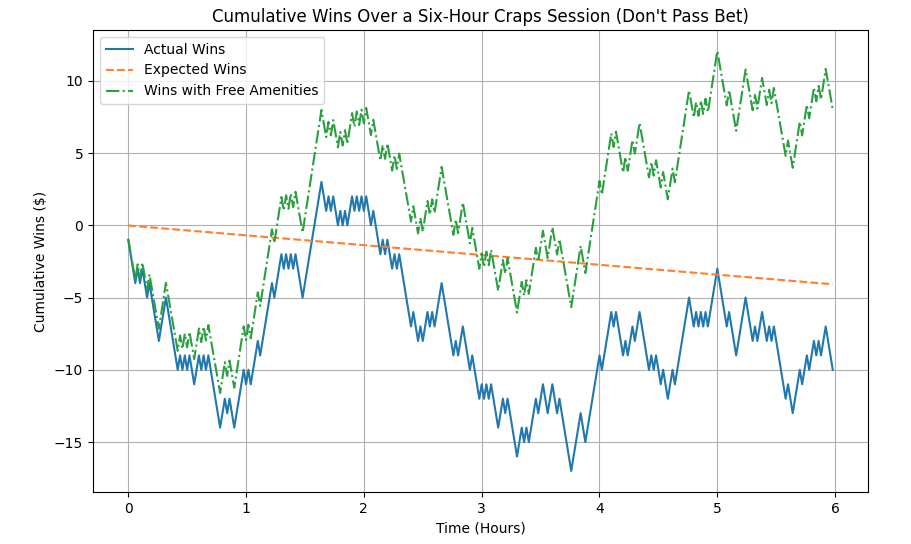
In this graph:
- Blue Line: Represents the actual cumulative wins over time, reflecting the natural ups and downs of a typical gambling session.
- Red Dashed Line: Indicates the expected losses due to the house edge, showing a consistent downward trend.
- Green Dashed-Dot Line: Demonstrates how the value of free amenities can offset these losses, leading to a more favorable outcome over time.
By carefully analyzing the costs and benefits associated with small bets and the use of casino amenities, I will demonstrate how you can technically “beat the casino” in terms of value, even if you are not walking away with significant monetary winnings. This strategy allows you to enjoy your time at the casino, engage in your favorite games, and make the most of the perks provided, all while ensuring that your overall experience is as cost-effective as possible.
In the sections that follow, I will delve into the specifics of this approach, examining the games with the best odds and lowest minimum bets, calculating the costs associated with the amenities you use, and demonstrating through practical examples how this strategy can be applied effectively.
Section 1: Understanding the Casino Edge
Defining the House Edge
The house edge is a fundamental concept in gambling that represents the casino’s mathematical advantage over the players. This edge ensures that, over time, the casino will profit. It is typically expressed as a percentage of each bet that the casino expects to retain as profit in the long run.
Mathematically, the house edge can be defined using the following formula:

Let’s delve into a few specific games to illustrate this concept:
- Roulette: In American roulette, which has 38 pockets (numbers 1 to 36, 0, and 00), the probability of winning a single number bet is 138381. The payout for this bet is 35 to 1.
Therefore, the expected loss can be calculated as follows:

Thus, the house edge is:

To simulate this effect, I have created a python function that can simulate roulette over six, ten hour sessions:

And the results are:
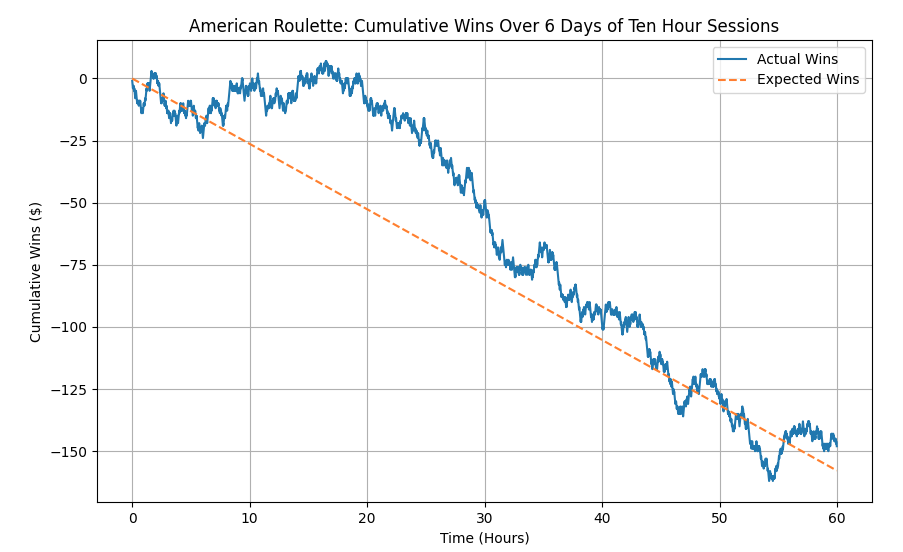
As we can see, even though we are sometimes “up”, the general trend follows the expected win line quite well.
- Blackjack: The house edge in blackjack varies based on the rules and player strategy but can be around 0.5% for a skilled player. The calculation involves complex probability and combinatorial analysis of card distributions and player decisions.

I have run a similar simulation for black jack:
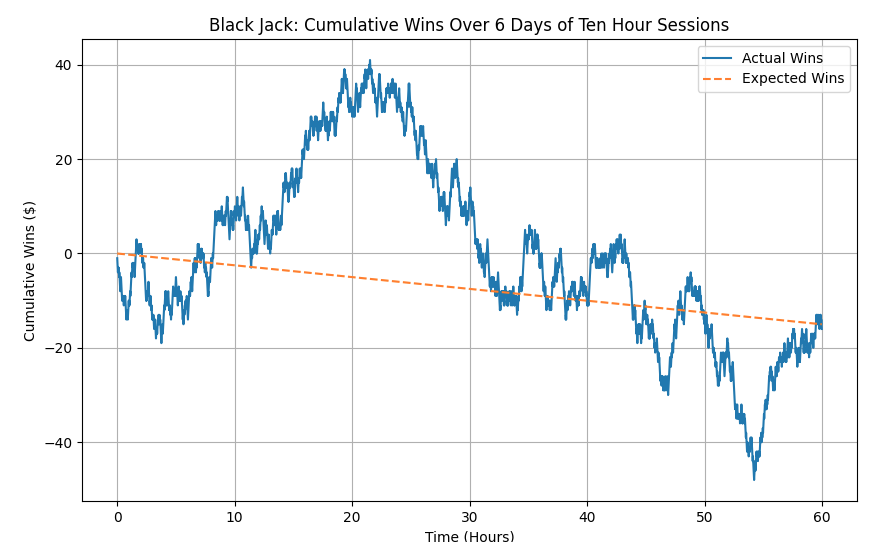
- Craps (Don’t Pass Bet): The Don’t Pass bet has a house edge of 1.36%. This edge can be understood by analyzing the probability of winning versus losing and the payouts for each outcome.
And a simulation for this as well
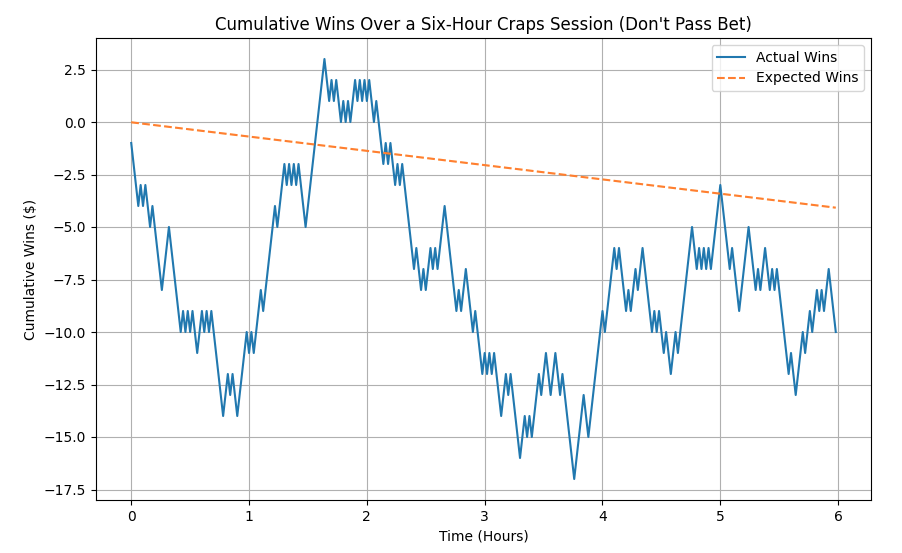

Here, we consider the probabilities and the payouts for each possible outcome in craps.
Why Traditional Gambling Strategies Fail
Traditional gambling strategies often aim to overcome the house edge through various betting systems. However, these strategies fail due to several reasons grounded in advanced mathematical principles:
- Law of Large Numbers: Over a large number of trials, the actual results will converge to the expected results. This means that while short-term deviations can occur, the house edge will manifest over time, guaranteeing the casino’s profit.

Here, 𝑋𝑖Xi represents the outcome of the i-th bet, and 𝜇μ is the expected value (house edge).
- Central Limit Theorem: This theorem states that the distribution of the sum (or average) of a large number of independent, identically distributed random variables approaches a normal distribution. In the context of gambling, it means that the more you play, the more your results will resemble a normal distribution centered around the expected loss.
- Martingale System and Variance: Betting systems like the Martingale (doubling your bet after each loss) assume an infinite bankroll and no betting limits, which is unrealistic. The high variance in gambling outcomes can lead to significant short-term losses, quickly depleting your funds.

High variance in outcomes means that large, unexpected losses are possible, making systems like Martingale impractical.
- Negative Expected Value: Most gambling strategies do not change the negative expected value of the bets. For instance, in slot machines, the expected value can be calculated as:

Where 𝑝𝑖pi is the probability of outcome 𝑖i, and 𝑥𝑖xi is the payout for outcome 𝑖i. Given the house edge, 𝐸(𝑋)E(X) is always less than the initial bet.
Minimizing Losses and Maximizing Free Amenities
Instead of attempting to beat the house through traditional gambling strategies, we can adopt a different approach: minimizing losses and maximizing the value of free amenities. This strategy focuses on enjoying the casino experience while keeping costs low and taking advantage of the perks provided by the casino.
- Small Bets on Low House Edge Games:
- By placing small bets on games with a low house edge, you reduce your expected losses. For example, placing $1 bets on the Don’t Pass line in craps, which has a house edge of 1.36%, means your expected loss per bet is only 1.36 cents.
- Formula: Expected Loss per Bet = Bet Amount × House Edge
- For a $1 bet on Don’t Pass: Expected Loss = $1 × 0.0136 = $0.0136 per bet
- Taking Advantage of Free Amenities:
- Casinos offer free amenities like drinks, snacks, and sometimes meals to keep players comfortable and engaged. By consuming these amenities, you effectively receive value that can offset your gambling losses.

- For example, if you consume three free drinks (each worth $1) during a session, you gain $3 in value.
- Formula: Total Value of Free Amenities = Number of Drinks × Cost per Drink
- For 3 drinks at $1 each: Total Value = 3 × $1 = $3
- Extended Playing Time:
- By placing smaller bets, you can extend your playing time, making the most of the casino’s amenities. This longer playing time allows you to enjoy more free drinks and snacks, further offsetting your costs.
- The longer you play, the more value you extract from the casino’s amenities, reducing your overall expenditure.
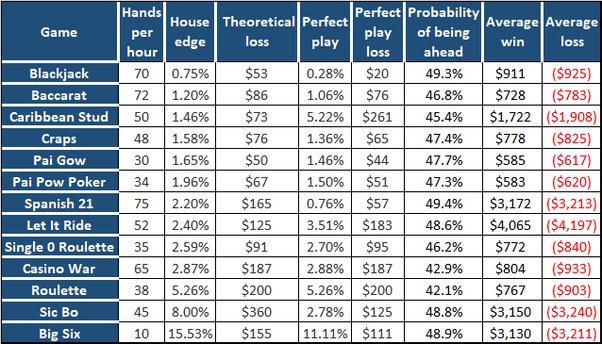
Comparison of Hose Edges
By adopting this approach, you can enjoy your casino visits without significant financial losses. Instead of focusing solely on winning, you shift the emphasis to making the most of what the casino offers. This way, you achieve a technical edge by balancing your expected losses with the value of free amenities, creating an enjoyable and economically sustainable casino experience.
Section 2: Choosing the Right Games
When aiming to minimize losses and maximize the value of free amenities, selecting the right games is crucial. The focus should be on games with low house edges and small minimum bets, allowing you to extend your playing time and reduce expected losses. Two excellent options are the Don’t Pass bet in craps and Quick Hits slot machines with 1-cent bets.
Craps (Don’t Pass Bet)
Rules and Odds of the Don’t Pass Bet

Craps is a popular dice game in casinos, and the Don’t Pass bet is one of the most strategic bets you can make. Here’s how it works:
- Come Out Roll: The game begins with the come out roll. If the shooter rolls a 2 or 3, Don’t Pass bets win. If the shooter rolls a 7 or 11, Don’t Pass bets lose. If the shooter rolls a 12, Don’t Pass bets push (tie).
- Point Phase: If any other number (4, 5, 6, 8, 9, 10) is rolled, that number becomes the point. The goal is for the shooter to roll a 7 before rolling the point number again. If a 7 is rolled first, Don’t Pass bets win. If the point number is rolled before a 7, Don’t Pass bets lose.
The Don’t Pass bet has a low house edge of 1.36%, making it one of the most favorable bets in the casino. Here’s how small bets minimize losses:
Example Calculation:
- Bet Amount: $1
- House Edge: 1.36%

With a $1 bet on the Don’t Pass line, your expected loss is just 1.36 cents per bet, allowing you to play for an extended period without significant losses.
Quick Hits Slot Machines
Game Description and Betting Options
Quick Hits is a popular slot machine game that offers various betting options, including a 1-cent bet. The game features multiple reels and paylines, and the objective is to match symbols across these paylines to win payouts. Quick Hits also includes bonus features and progressive jackpots, which can add excitement to the game.
1-Cent Bet Impact on Expected Losses
Betting 1 cent per spin significantly reduces your expected losses compared to higher bets. Slot machines typically have a higher house edge than table games, but the small bet size can help mitigate this.
Example Calculation:
- Bet Amount: $0.01
- House Edge: 10% (varies by machine, but 10% is a typical figure for slot machines)

With a 1-cent bet on Quick Hits, your expected loss per spin is just 0.1 cent, allowing you to enjoy the game for a long time with minimal losses.
Table: Comparison of Game Odds and Expected Losses
|
Game
|
Bet Amount
|
House Edge
|
Expected Loss per Bet
|
|
Craps (Don’t Pass)
|
$1.00
|
1.36%
|
$0.0136
|
|
Quick Hits Slots
|
$0.01
|
10%
|
$0.001
|
|
Roulette (Single)
|
$1.00
|
5.26%
|
$0.0526
|
|
Blackjack (Basic Strategy)
|
$1.00
|
0.5%
|
$0.005
|
|
Baccarat (Banker Bet)
|
$1.00
|
1.06%
|
$0.0106
|
This table illustrates how different games, bet amounts, and house edges impact expected losses. Craps (Don’t Pass) and Quick Hits slots with 1-cent bets are prime examples of how you can minimize losses while still enjoying a variety of casino games. Blackjack and Baccarat also offer relatively low house edges, but the minimum bets are typically higher than those for Quick Hits slots.
By choosing games with low house edges and placing small bets, you can extend your playing time, reduce your expected losses, and maximize the value of the free amenities provided by the casino. This strategy helps ensure that your overall casino experience is both enjoyable and economically sustainable.
Section 3: Calculating the Cost of Casino Amenities
In addition to the expected losses from gambling, it’s important to consider the costs incurred by the casino to keep you comfortable and entertained. These costs include heating and cooling, electricity consumption, and the maintenance and depreciation of gaming machines. By estimating these costs, we can better understand how your presence impacts the casino’s expenses and how you might offset these costs through small bets and extended play.
Heating and Cooling Costs
Casinos maintain a comfortable environment for their patrons, which involves significant heating and cooling expenses. These costs can be estimated based on the space occupied by an average patron and the cost of HVAC (Heating, Ventilation, and Air Conditioning) per square foot.
Estimate of HVAC Costs:
- HVAC cost per square foot: $0.10 per hour
- Space occupied by an average patron: 10 square feet
- Duration of a casino session: 3 hours
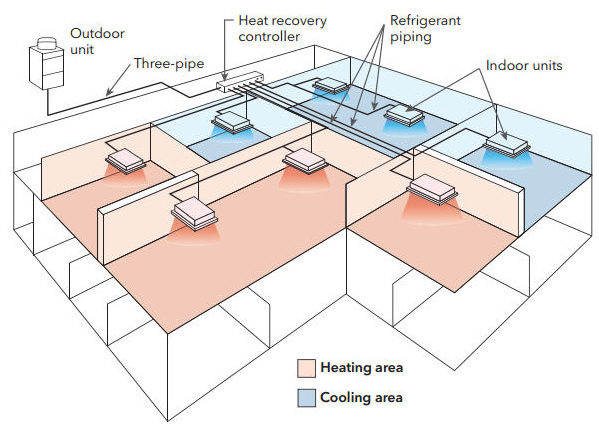
Formula:

Electricity Consumption
The operation of gaming machines, such as slot machines and bubble craps machines, requires a significant amount of electricity. We can estimate the power consumption of these machines and calculate the associated costs based on local electricity rates.

Estimate of Power Consumption:
- Power consumption of a slot machine: 250 watts (0.25 kWh)
- Power consumption of a bubble craps machine: 500 watts (0.5 kWh)
- Local electricity rate: $0.15 per kWh
- Duration of a casino session: 3 hours
Formula:

For a slot machine:

For a bubble craps machine:

Maintenance and Depreciation
Gaming machines also incur maintenance costs and depreciate over time. We can estimate these costs based on average maintenance expenses and depreciation rates.
Estimate of Maintenance and Depreciation:
- Average maintenance cost: $50 per month
- Depreciation rate: 10% annually
- Initial cost of a gaming machine: $10,000
- Number of hours in a year: 365 days × 24 hours = 8,760 hours
Formula for Maintenance Cost:

For a 3-hour session:
Maintenance Cost=0.069×3=$0.207 per session
Formula for Depreciation Cost:

For a 3-hour session:
Depreciation Cost=0.114×3=$0.342 per session
Summary of Costs
By adding up these costs, we can determine the total expense the casino incurs for each session you play:
- HVAC Cost: $3.00 per session
- Electricity Cost: $0.1125 (slot machine) or $0.225 (bubble craps machine) per session
- Maintenance and Depreciation Cost: $0.549 per session
For a slot machine:
Total Cost per Session=$3.00+$0.1125+$0.549=$3.6615
For a bubble craps machine:
Total Cost per Session=$3.00+$0.225+$0.549=$3.774
By understanding these costs, you can better appreciate how your extended play and small bets contribute to the casino’s operating expenses. While these costs may seem small individually, they accumulate over time, especially with frequent visits, effectively offsetting the casino’s edge in a unique and unconventional way.
Section 5: Practical Application of the Maiolo Casino Efficiency Function
In this section, we bring together all the calculations and concepts discussed previously to demonstrate how you can effectively “beat the casino” through the Maiolo Casino Efficiency Function. By carefully analyzing the costs incurred by the casino and the benefits you gain, we will show how you can enjoy your casino visits while achieving a technical edge.
Example Scenario: My Typical Casino Visit
Assumptions:
- Visits per week: 3
- Duration per session: 3 hours
- Bet amount: $1 on Don’t Pass bet in craps
- Bet amount: $0.01 on Quick Hits slot machine
- Consumption: 3 free drinks per session
Calculations:
- Expected Loss from Gambling:
- Craps (Don’t Pass bet):
- House Edge: 1.36%
- Bet Amount: $1
- Expected Loss per Bet: $0.0136
- Bets per hour: 60 (one bet per minute)
Expected Loss per Session (Craps)=Bet Amount×House Edge×Bets per Hour×Duration
Expected Loss per Session (Craps)=1×0.0136×60×3=$2.448
- Quick Hits Slot Machine:
- House Edge: 10%
- Bet Amount: $0.01
- Expected Loss per Bet: $0.001
- Bets per hour: 600 (10 spins per minute)
Expected Loss per Session (Slots)=Bet Amount×House Edge×Bets per Hour×Duration Expected Loss per Session (Slots)=0.01×0.10×600×3=$1.80
- Total Expected Loss from Gambling:
Total Expected Loss per Session=Expected Loss (Craps)+Expected Loss (Slots) Total Expected Loss per Session=2.448+1.80=$4.248
- Value of Free Drinks:
- Number of Drinks: 3
- Cost per Drink: $1
Value of Free Drinks per Session=Number of Drinks×Cost per Drink Value of Free Drinks per Session=3×1=$3.00
- Cost of Casino Amenities:
- HVAC Cost per Session: $3.00
- Electricity Cost for Slot Machine per Session: $0.1125
- Maintenance and Depreciation Cost per Session: $0.549
Total Casino Amenity Cost per Session (Slot Machine)=$3.00+$0.1125+$0.549=$3.6615
- Maiolo Casino Efficiency Function:
To determine if you beat the casino, we need to compare your expected losses with the value of the amenities you consume and the costs incurred by the casino. The Maiolo Casino Efficiency Function brings together these elements into a single, more complex calculation:
Let 𝑛 be the number of visits per week. Let 𝑡 be the duration per session (in hours). Let 𝑏 be the bet amount.Let b be the bet amount. Let 𝐸𝑔 be the expected loss from gambling per session. Let 𝑉𝑎 be the value of free amenities per session. Let 𝐶𝑎 be the total casino amenity cost per session.
Maiolo Casino Efficiency Function

For a single session:
𝐸𝑔=4.248
𝑉𝑎=3
𝐶𝑎=3.6615
𝑛=3
𝑡=3
𝑏=1
Maiolo Casino Efficiency Function=

Maiolo Casino Efficiency Function=

This indicates a positive efficiency score, suggesting that the benefits and amenities outweigh the costs and losses.
Now, let’s extend this calculation to a weekly basis.
Weekly Summary of Costs vs. Benefits
Weekly Calculations:
- Visits per week: 3
- Net Benefit per Session: $2.4135
Weekly Net Benefit=Net Benefit per Session×Visits per Week
Weekly Net Benefit=$2.4135×3=$7.2405
Table: Weekly Summary of Costs vs. Benefits
|
Item
|
Per Session ($)
|
Per Week ($)
|
|
Expected Loss from Gambling
|
$4.248
|
$12.744
|
|
Value of Free Drinks
|
$3.00
|
$9.00
|
|
HVAC Cost
|
$3.00
|
$9.00
|
|
Electricity Cost (Slot Machine)
|
$0.1125
|
$0.3375
|
|
Maintenance and Depreciation Cost
|
$0.549
|
$1.647
|
|
Total Casino Amenity Costs
|
$3.6615
|
$11.3345
|
|
Maiolo Casino Efficiency Function (Net Benefit)
|
$2.4135
|
$7.2405
|
I have created a final python function which graphs our system vs a traditional game of craps (don’t pass bet), showing our accumulated “wins” overtime, thus “beating the casino”.
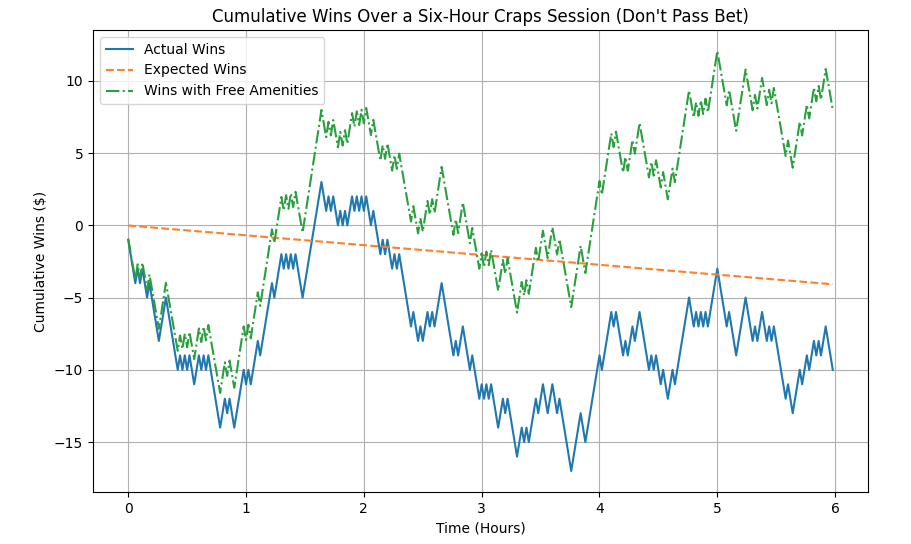
Efficiency Function Ranges and Interpretation
To understand what the efficiency function values mean, we can categorize them into ranges indicating whether the player or the casino has the edge:
|
Efficiency Function Value
|
Interpretation
|
|
> 1
|
Player has the edge (benefits outweigh costs)
|
|
= 1
|
Break-even point (benefits equal costs)
|
|
< 1
|
Casino has the edge (costs outweigh benefits)
|
Comparing with a Negative Scenario: Traditional Slot Play
To show how the Maiolo Casino Efficiency Function typically gives the house edge in a traditional scenario, let’s consider a game and strategy where the value is negative, thus favoring the casino.
Scenario: Traditional Slot Machine Play
- Bet amount: $1 per spin
- House edge: 10%
- Bets per hour: 600 (10 spins per minute)
- Duration per session: 3 hours
- No consumption of free drinks
Calculations:
- Expected Loss from Gambling:
Expected Loss per Session=Bet Amount×House Edge×Bets per Hour×Duration Expected Loss per Session=1×0.10×600×3=$180
- Value of Free Drinks:
- Cost of Casino Amenities:
- HVAC Cost per Session: $3.00
- Electricity Cost for Slot Machine per Session: $0.1125
- Maintenance and Depreciation Cost per Session: $0.549
Total Casino Amenity Cost per Session (Slot Machine)=$3.00+$0.1125+$0.549=$3.6615
- Maiolo Casino Efficiency Function for Traditional Slot Play:
Let 𝑛 be the number of visits per week. Let 𝑡 be the duration per session (in hours). Let 𝑏 be the bet amount.Let b be the bet amount. Let 𝐸𝑔 be the expected loss from gambling per session. Let 𝑉𝑎 be the value of free amenities per session. Let 𝐶𝑎 be the total casino amenity cost per session.
Maiolo Casino Efficiency Function=

For a single session:
𝐸𝑔=180
𝑉𝑎=0
𝐶𝑎=3.6615
𝑛=3
𝑡=3
𝑏=1

This indicates a very low efficiency score, showing that the costs and losses far outweigh the benefits and amenities.
Conclusion: Achieving the Technical Edge
By carefully selecting games with low house edges and placing small bets, you minimize your gambling losses. At the same time, by consuming free amenities and leveraging the costs incurred by the casino to keep you comfortable, you create a scenario where the casino’s expenses exceed your losses.
Using the Maiolo Casino Efficiency Function, we demonstrated that your net benefit per session is $2.4135, and on a weekly basis, it amounts to $7.2405. This technical edge allows you to enjoy your casino visits, engage in your favorite games, and make the most of the amenities provided, all while ensuring that your overall experience is cost-effective and sustainable.
In essence, you’ve “beaten the casino” not by winning big, but by smartly leveraging the costs and benefits to your advantage. This approach transforms your casino visits into a strategically balanced experience, providing both entertainment and value.
Section 6: Conclusion
Summary of Findings
Through careful analysis and strategic planning, we have demonstrated that it is possible to enjoy a casino visit while effectively minimizing your losses and potentially even gaining a slight edge over the house. By placing small bets on games with low house edges, such as the Don’t Pass bet in craps and 1-cent bets on Quick Hits slot machines, you reduce the overall expected loss from gambling. When you combine these small bets with the value derived from free amenities provided by the casino, such as drinks, climate-controlled environments, and comfortable seating, you can create a scenario where the benefits you receive offset the inherent house edge.
The Maiolo Casino Efficiency Function was introduced as a comprehensive formula to quantify this balance. This function takes into account the expected loss from gambling, the value of free amenities, and the costs incurred by the casino to accommodate you. The resulting efficiency score helps determine whether you are gaining more value than you are losing, effectively “beating the casino” in a non-traditional sense.
Importance of Responsible Gambling
While this approach provides a unique way to enjoy the casino experience without significant financial losses, it is crucial to emphasize the importance of responsible gambling. The primary goal should always be to enjoy the entertainment and social aspects of the casino, rather than to chase profits or recover losses. Responsible gambling means setting limits on the amount of money and time you spend at the casino, recognizing when to stop, and understanding that gambling should never interfere with your personal or financial well-being.
By maintaining a responsible gambling mindset, you can ensure that your casino visits remain enjoyable and stress-free. The strategies discussed in this guide are designed to enhance your experience by maximizing the value you receive from the casino while minimizing your losses.
Final Thoughts and Encouragement
In conclusion, the approach outlined in this guide offers a practical and enjoyable way to experience the casino. By leveraging small bets and maximizing the use of free amenities, you can create a balanced and cost-effective casino visit. The Maiolo Casino Efficiency Function serves as a valuable tool to help you assess and optimize your strategy, ensuring that you get the most out of your time at the casino.
We encourage you to try this approach during your next casino visit. Focus on games with low house edges, place small bets, and take full advantage of the complimentary amenities offered by the casino. By doing so, you can enjoy a rewarding and entertaining experience while maintaining control over your spending.
Remember, the ultimate goal is to have fun and enjoy the unique atmosphere that casinos provide. With the right strategy and a responsible mindset, you can make your casino visits both enjoyable and economically sustainable. Happy gambling!
































 >
> >
>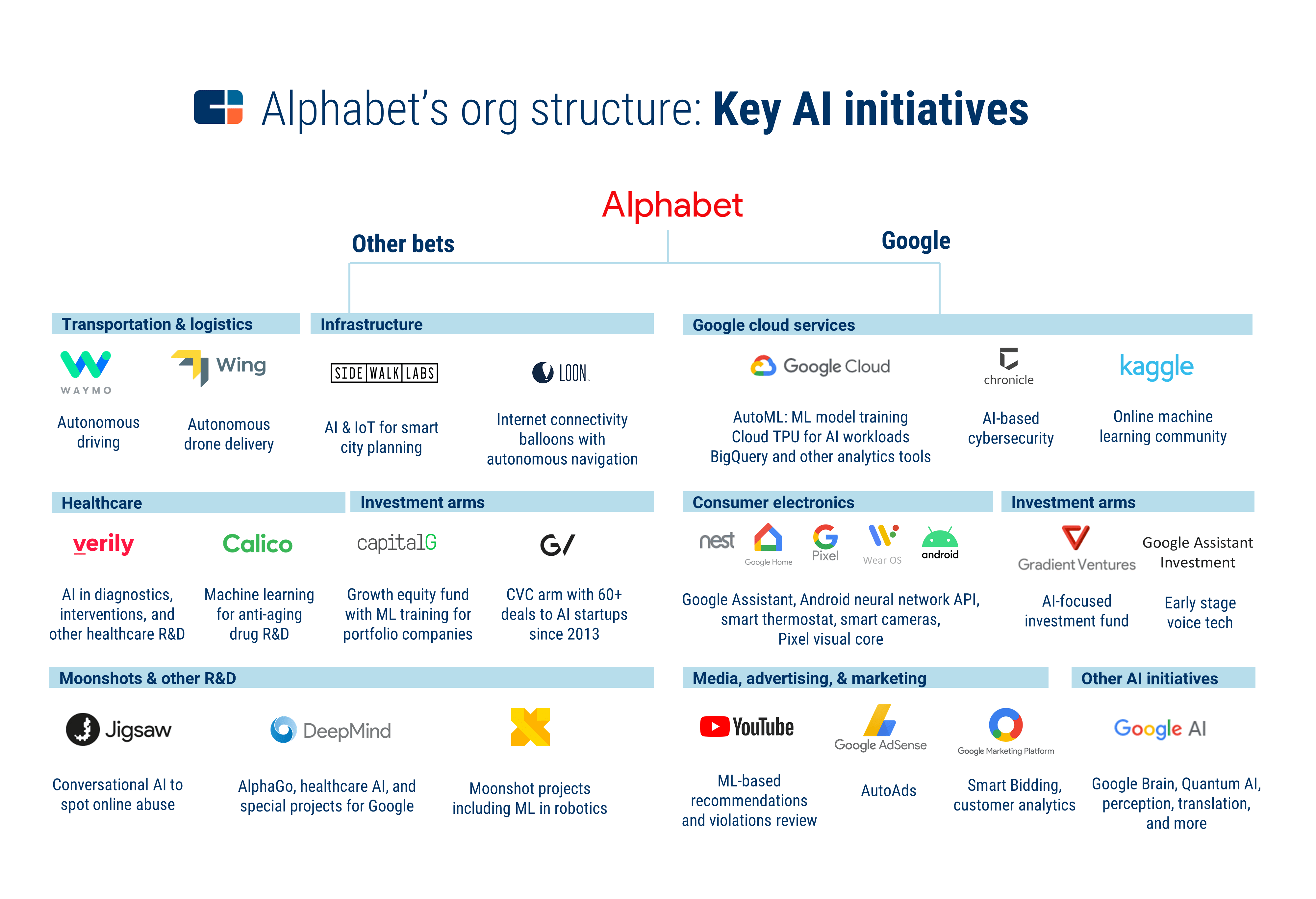 >
>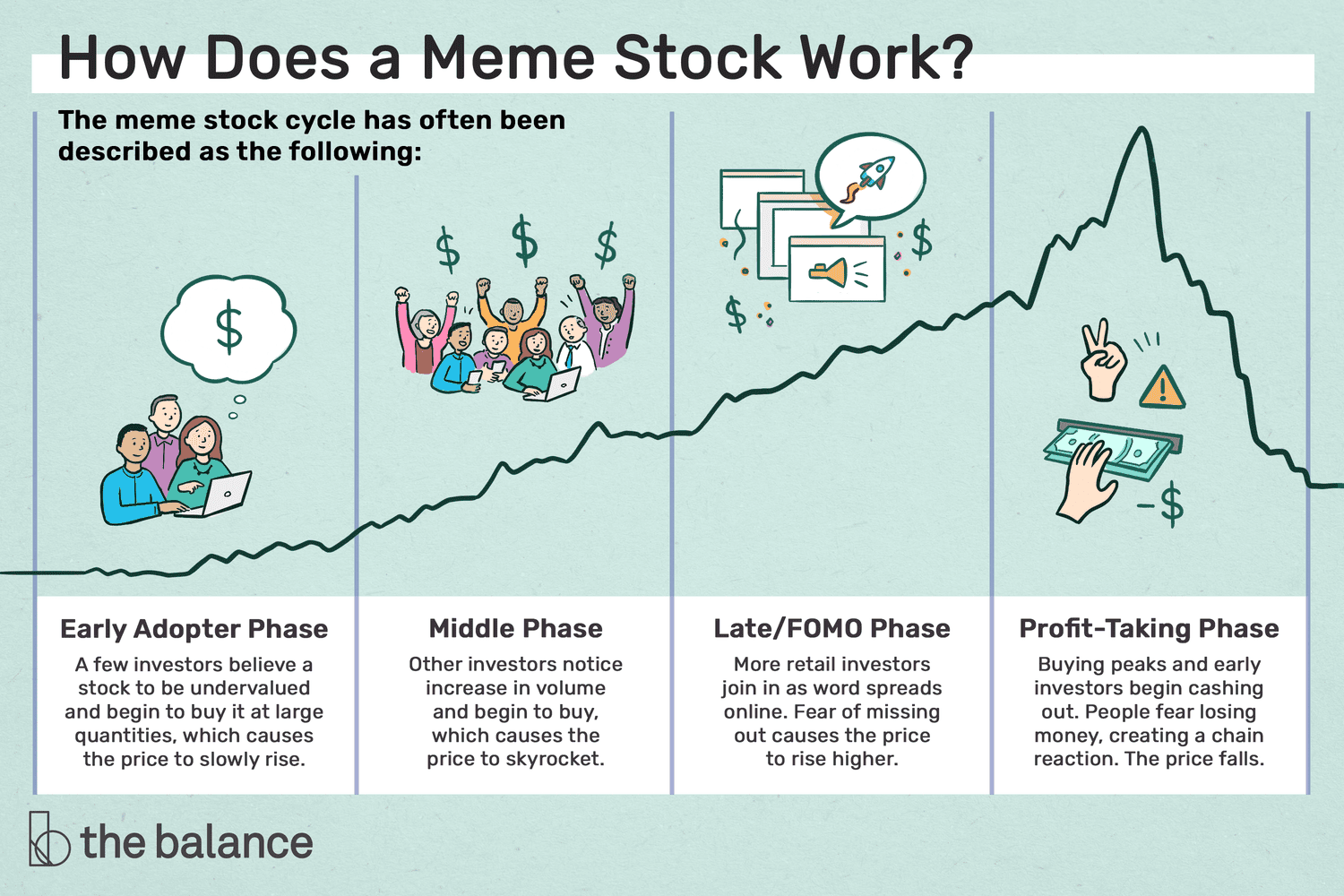 >
>